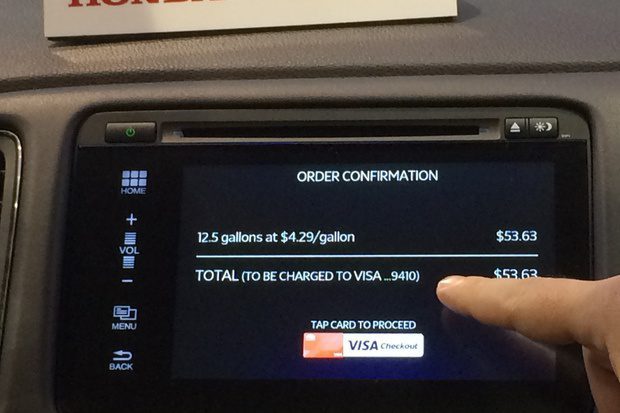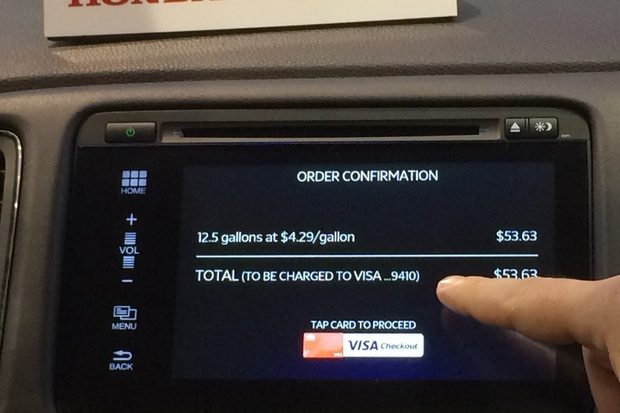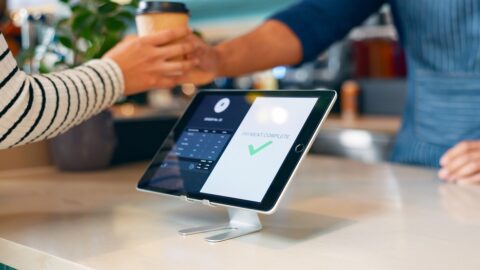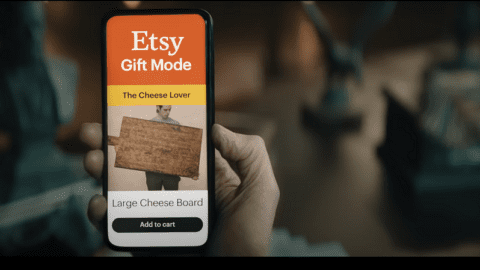 The automobile business, like the retail industry, is undergoing huge disruption. In addition to changes in the cars themselves (electric engines, self-driving technologies), there are fundamental changes afoot in the relationship between the consumer and the automobile.
The automobile business, like the retail industry, is undergoing huge disruption. In addition to changes in the cars themselves (electric engines, self-driving technologies), there are fundamental changes afoot in the relationship between the consumer and the automobile.
In many ways, automakers are trying to ensure the car is as connected to a consumer’s life as her smartphone is. Automated driving, if and when it truly becomes mainstream, will enable human attention to focus on activities that don’t involve piloting a car to a destination. And there are some heavy hitters already getting into the mix: Ford is integrating Amazon’s Alexa into its latest models to shop, search and control smart home features, and Audi is working with Baidu, Tencent, Alibaba and other Chinese tech giants to build integrated services within its autonomous cars.
For retailers, there are tremendous opportunities emerging for those who ride shotgun, especially when they consider the following:
Advertisement
- By 2021, more than 381 million connected cars will be on the road around the world;
- As many as 10 million self-driving cars may be on the road by 2020; and
- Autonomous vehicles could free up to 50 minutes per day for consumers to be either used for work, relaxation or entertainment —including shopping —while traveling.
“This would add to the digital experience with which we’re already familiar on our mobile devices and computers,” said Sam Cinquegrani, CEO of ObjectWave in an interview with Retail TouchPoints. “This new digital touch point, the car, would know about the other touch points within the consumer’s digital ecosphere.”
Transforming The In-Car Experience
After a long day at work, have you ever forgotten to get gas or pick up flowers for your wife’s birthday? CES 2017 showed us that starting this year, your car will not only remind you to do all those things, it will let you pay for them from the driver’s seat, without opening your wallet. Quick tip: don’t wait to see if your competitors are looking to team up with car manufacturers; they are.
Fiat Chrysler kicked off CES by showing its “designed by Millennials for Millennials” Portal concept car. Some innovative features include the car “recognizing” its owner from afar by smartphone; personalizing the in-car experience with facial recognition and biometrics; and providing a community display screen where multiple passengers can view and share content in the car. Other technologies include smart home integrations, natural language recognition and in-vehicle mobile commerce, where the car becomes an extension of services like Apple Pay and Samsung Pay.
BMW partnered with Microsoft, Intel, Amazon and others to articulate its vision of the connected experience. Using the Open Mobility Cloud, BMW wants to position the car as an integral smart device by tapping into information in other services consumers currently use. BMW also brought natural voice services into the car, via Microsoft’s Cortana assistant, accessible from the vehicle’s iDrive interface.
Literally Directing The Shopper Journey
Perhaps the most retail-ready example from CES came from payments processor Concardis, which is partnering with automotive developer IAV to develop a car-based commerce platform. The platform, called Automotive Marketplace, is intended to use commerce functionality to “make time spent driving more productive,” Concardis CEO Marcus Mosen said in a statement.
The firm’s pilot platform essentially turns the car into a combination shopping concierge/point of sale. Drivers can store shopping lists online; the system then compares the list’s items with merchants along the driver’s route, informs users of matches, and directs them to applicable merchants by adjusting the route so that they can conveniently complete their errands.
In addition, users will be able to purchase and pay via the platform through previously stored payment information, so that they can pick up their items on arrival without having to shop or wait in line. Automotive Marketplace would likely be integrated into a car’s existing infotainment system.
These types of geo-local deals will be even more important as people start to fully operate their smart devices in the car instead of holding their hands on the wheel. As an example, consumers can open up the Hotel Tonight app near a hotel and see discounted nightly rates for establishments they’re close to. These kinds of offers will become more common as brands look to attract consumers who are just a quick turn away.
Truly “Mobile” Payments And Relevant Retail Experiences
As the automobile becomes more of a personal assistant, of utmost importance to retailers is the data gleaned from partnerships, which can be used to drive more relevant future purchases. In a recent partnership among MasterCard, IBM, OnStar and General Motors, the benefits of retail’s newest commerce platform came into sharp focus.
By embedding Masterpass within OnStar Go, Mastercard will enable drivers and passengers to make secure and seamless payments for goods and services using credit or debit cards stored within their Masterpass wallet.
With IBM Watson, OnStar Go enables merchants and brands to create new, connected driving experiences. For example, if a driver picks up breakfast from a specific restaurant that is part of the OnStar Go merchant marketplace, the restaurant could prompt the driver to order menu items based on past order history.
The driver is then able to order ahead and checkout with Masterpass directly from the car, and pick up his order without having to pay at the restaurant. With time and increased usage, the merchant would be able to learn more about the driver’s preferences and to make more personalized, contextual offers delivered on the car’s dashboard.
DOOH Lets You Stick With Your Customer Every Step Of The Way
Connected self-driving cars will deliver captive audiences for marketers; after all, you can’t get more captive than being in a self-piloting vehicle. With the driver freed up from actually driving, there is further potential for advertisers to reach consumers in motion. The outdoor advertising industry, for one, would appear an obvious benefactor.
Consider this: if you are in a driverless car in a mostly digital environment, you will probably have some sort of unique ID. Would digital advertising be able to react to the opted-in individuals making the journey? The answer to that is a resounding yes, thanks to digital out-of-home (DOOH) advertising, also known as digital place-based (DPB) media.
This type of advertising utilizes strategically placed networked digital signage displays to reach consumers with highly targeted messages, in venues that include transportation hubs (airports, railway and bus terminals), office building lobbies, elevators and shopping malls.
Not convinced? By 2018, the U.S. is expected to become the first DOOH (Digital Out Of Home) market to exceed $10 billion in value, and it is expected to reach $11 billion by 2020.
Digital out-of-home networks provide advertisers with additional engagement opportunities that include interactive touchscreens and mobile integration using NFC, BLE and QR codes. Retailers can customize their messages to a specific location, time of day or special event and deliver personalized messages to specifically targeted customers.
“Imagine being able to engage with the customer while they are on route to or from a store,” said Adam Pressman, Partner, Retail And Digital Practices for A.T. Kearney in an interview with Retail TouchPoints. “There could be timely personalized ads and offers, an instructional video for a specific purchase, a virtual session with a store or remote employee, or the ability to see additional content about a purchase. It can also allow for new opportunities for customers to share their experiences with others while things are still fresh in their mind. Just as many speak about the impact of ‘mobile first’ today, the introduction of automated cars will lead to a new definition for ‘mobility’ as we look into the future.”
That Billboard Knows Me!
One billboard campaign tested in Chicago, Dallas and parts of New Jersey “watched” motorists behind the wheels of a Toyota Camry, Nissan Altima, Hyundai Sonata or Ford Fusion.
The signs, which belonged to General Motors, were part of an outdoor campaign using cameras on billboards that identified passing vehicles by their grilles. When targeted vehicles drove by, the system gave a digital billboard 1,000 feet down the road messages about why their car was inferior to GM’s Chevy Malibu. Some drivers would learn, for example, that the Malibu had “more available safety features than your Nissan Altima.”
Driving It All Home
The days of cruising around with “no particular place to go” may be over, and thanks to modern technology, consumers will always have a direct path to your doors and unlimited retail opportunities. Indeed, the promise of the car as a commerce platform is too great an opportunity to ignore, and the love affair between cars and retail is just beginning. Just wait until people begin to treat their cars not as a means of transportation but as smartphones on wheels. It is certainly time for retailers to hit the gas.









